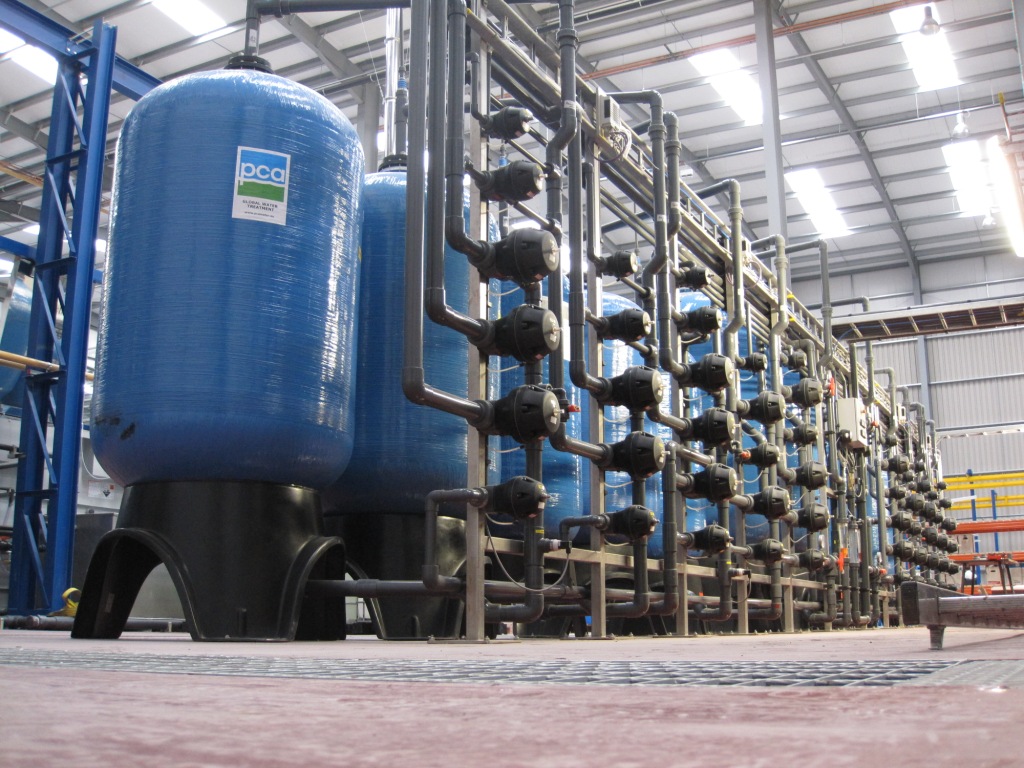Cation-Anion
Cation-Anion ion exchangers are used to produce demineralised water. In this process, it is important that both positively and negatively charged ions are removed. Therefore a treatment in 2 steps is required.
First the ion-rich water will flow into the cationresin-column. During the contact between the water and the resins, the positive ions will be exchanged for H+-ions. This exchange happens very fast, so there is no long contact time required. When these resins are saturated, there is a regeneration with acid (usually HCI or H2SO4).
After the cation bottle the liquid enters the anion bottle. Here the same process will take place as in the cation bottles, but this time the negatively charged ions are replaced with OH-. Together, H+ from the first bottle and OH- give pure water. When these anion resins are saturated, they are regenerated with NaOH.
Regeneration consists of 3 to 4 steps. The first (facultative) step is washing the resins. Following the backwash, the acid (cation) or the alcaline (anion) is diluted to the desired level and flows slowly through the resin bed.
In the third fase a slow rinse is performed and the last step is a fast rinse. Afterwards the line can return to its treatment purpose.
The follow-up of the ion exchange is usually based on the measured conductivity of the treated water. After regenerating this will be very low. Subsequently the conductivity will rise slowly. The conductivity will increase more rapidly as the column saturates further.
The operator can decide the level of conductivity at which the regeneration starts. This depends on the desired quality.
The advantage of a cation-anion exchanger is that it provides a very good quality of demineralised water. In addition, relatively little waste water is released.
The disadvantage is that the system cannot produce demineralised water during regeneration. Such a regeneration takes several hours, depending on the resin volume. Another disadvantage is that the use of acid and base is necessary, which involves some safety issues.
An ion exchanger can be used to produce demineralised water based on fresh water. This can be well water, city water, rainwater... In addition, an ion exchanger is often placed in a closed loop. This means that the (slightly) polluted demineralised water, after it has been used in the production process, is directed back through the ion exchanger to demineralise it again. The major advantage of this closed-loop solution is that considerable amounts of water can be saved.
PCA can help you with this technology, both in design and construction of the installation.

